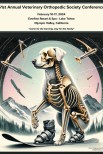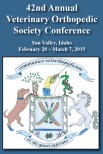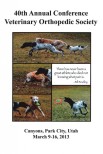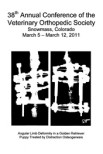OBJECTIVE: To report the use of computer-aided design software for virtual surgical planning and design of three-dimensional printed patient-specific osteotomy and reduction guides for facilitation of bilateral shoulder arthrodesis in a dog.
METHODS: A three-year-old male entire Pekinese was presented unable to walk due to bilateral severe medial shoulder instability. Computed tomographic data was processed to yield three-dimensional mesh representations of the humeri and scapulae which could be manipulated in computer-aided design software. Key virtual surgical planning steps included joint realignment, osteotomies of the glenoid and humeral head, and reduction. Virtual osteotomy and reduction guides were designed, three-dimensionally printed, and used intra-operatively.
RESULTS: Appropriate alignment, reduction and fixation of the humeri and scapulae were achieved bilaterally. The patient regained the ability to walk unassisted after two weeks and was subsequently able to exercise normally without lameness.
CLINICAL SIGNIFICANCE: Patient-specific, three-dimensional printed osteotomy and reduction guides facilitated accurate bilateral shoulder arthrodeses.
Bilateral shoulder arthrodesis in a Pekinese using three-dimensional printed patient-specific osteotomy and reduction guides
Journal
Oxley B. Vet Comp Orthop Traumatol. 2017 May 22; 30 (3): 230-236.









